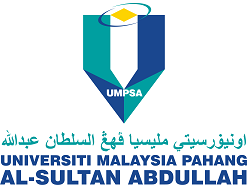Piper betle leaves extract adversely affect motility of Pseudomonas aeruginosa
DOI:
https://doi.org/10.15282/http://dx.doi.org/10.15282/ijets.7.1.2020.1003Keywords:
Motility, Pseudomonas aeruginosa, Piper betle, quorum sensingAbstract
Pseudomonas aeruginosa is an opportunistic pathogen that orchestrate its disease manifestation via a complex communication system known as quorum sensing (QS). Under the regulation of this complex network of QS system, is a myriad of virulence factors including the flagella and pili that contribute to its motility. To establish an infection in a host, P. aeruginosa must first attach itself to host cells with the assistance of flagella and pili and it would be a mere impossible for P. aeruginosa to initiate and establish an infection in the host without those features. In this study, we investigated the motility of P. aeruginosa under the influence of Piper betle leaves extract by growing the bacteria on a semi solid medium and compared the growth spread of the pathogen against the untreated sample. There are three types of motilities that were being investigated, which were swimming, swarming and twitching. In all three assays, a fraction of ethyl acetate extract of P. betle leaves were found to reduce the motility of P. aeruginosa with greatest defect in swimming at more than 80% reduction as compared to the untreated sample. Meanwhile, the fraction partially decreased the swarming and twitching of P. aeruginosa by 58% and 50% reduction respectively, in comparison to the untreated sample. The exhibited defect in the motility of P. aeruginosa proves the anti-QS property of the fraction of ethyl acetate extract of P. betle leaves and could be developed as a potential therapeutic agent against the pathogen.


